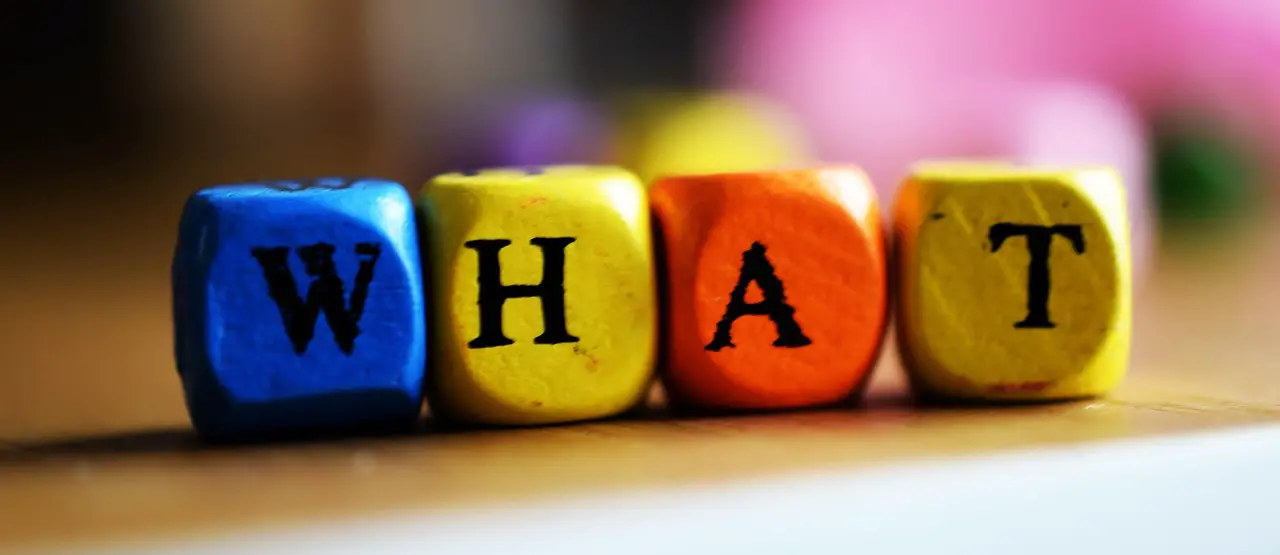Balsam Fir is a popular Christmas tree choice due to its pleasing aroma, dense branches, and excellent needle retention. Its symmetrical shape and attractive dark green needles make it a beautiful addition to holiday decor.
Introduction to Balsam Fir as a Christmas Tree

The Balsam Fir (Abies balsamea) is one of the most favored Christmas trees in North America. Known for its rich fragrance and classic look, it has become synonymous with the holiday season. Many families choose this species for its many appealing characteristics, which contribute to its popularity in festive celebrations.
Originating from the northeastern United States and Canada, the Balsam Fir thrives in cooler climates. It is well-adapted to regions with cold winters, making it an ideal choice for many households during the Christmas season. The tree typically grows between 40 to 60 feet tall, exhibiting a narrow, conical shape that lends itself well to decoration.
One of the standout features of the Balsam Fir is its lush, dark green needles. These needles are flat and soft to the touch, which makes handling the tree a pleasant experience. Furthermore, they maintain their color and texture longer than many other species, enhancing the tree’s visual appeal throughout the Christmas season.
Aromatherapy Benefits
The aroma of the Balsam Fir is another factor that elevates its status as a Christmas tree. The scent is often described as refreshing and invigorating, reminiscent of a walk in a pine forest. This unique fragrance can create a warm and inviting atmosphere in any home, making it a sensory highlight during holiday gatherings.
Beyond just being aromatic, studies have suggested that the scent of fir trees can have calming effects on individuals. The natural oils released from the needles may help reduce stress and promote relaxation, contributing to the overall joy of the holiday season.
Needle Retention and Longevity
One of the practical aspects that makes the Balsam Fir an excellent choice for Christmas trees is its needle retention. When properly cared for, this tree can hold onto its needles throughout the holiday season, minimizing mess and enhancing its longevity.
The Balsam Fir’s ability to retain needles stems from its moisture content. When cut and placed in water, these trees can stay hydrated effectively, reducing needle drop. This feature is particularly appreciated by families who want a beautiful tree that lasts through holiday festivities without hassle.
Care Tips for Balsam Fir Trees
- Place the tree in water immediately after cutting.
- Ensure the water level remains consistent; check daily.
- Avoid placing the tree near heat sources, as this can dry it out.
- Consider using a tree preservative to enhance longevity.
Visual Appeal and Decorating Options
The Balsam Fir’s naturally symmetrical shape provides an excellent canvas for holiday decorations. Its sturdy branches can support various ornaments, from delicate glass baubles to heavy garlands. This versatility allows families to express their creativity and personalize their tree according to their holiday theme or tradition.
Additionally, the dark green color of the needles contrasts beautifully with bright lights and colorful ornaments, making them stand out. This striking visual appeal is one of the reasons why many people opt for a Balsam Fir when selecting their Christmas tree.
Popular Decorating Ideas
- Traditional red and gold ornaments for a classic look.
- Rustic decorations like burlap bows and pinecones for a natural theme.
- Bright multicolored lights to create a festive atmosphere.
- Handmade ornaments for a personal touch.
Environmental Considerations
Choosing a Balsam Fir as a Christmas tree also comes with environmental benefits. These trees are often grown on sustainable farms where replanting occurs after harvesting. This practice helps maintain forest ecosystems and supports wildlife habitats.
Furthermore, real trees like the Balsam Fir are biodegradable. After the holiday season, they can be recycled into mulch or compost, reducing waste compared to artificial trees that may take years to break down in landfills.
Choosing the Right Balsam Fir Tree
When selecting a Balsam Fir for Christmas, there are several factors to consider. The right tree can enhance your holiday experience, making it essential to know what to look for. Here are some tips to help you choose the best Balsam Fir tree.
Height and Size
The first consideration is the height and size of the tree. Balsam Firs come in various sizes, from tabletop versions to towering giants. Measure the space where you intend to place the tree to ensure it fits well. A good rule of thumb is to leave at least six inches between the top of the tree and the ceiling.
Branch Density
Next, examine the density of the branches. A well-shaped Balsam Fir should have strong, evenly spaced branches that can support ornaments. Look for trees that have a full appearance without any bare spots. This not only enhances its aesthetic appeal but also provides ample space for decorations.
Needle Freshness
Check the needles for freshness. Gently grasp a branch and run your fingers along it. If the needles feel flexible and do not break easily, the tree is likely fresh. Additionally, fresh Balsam Fir needles will have a pleasant aroma. If they smell dull or dry, it may indicate that the tree is not recently cut.
Caring for Your Balsam Fir Tree
Once you’ve selected the perfect Balsam Fir, proper care is crucial to keep it healthy throughout the holiday season. Here are some essential care tips to maintain your tree’s freshness and beauty.
Watering Needs
Balsam Firs require plenty of water to stay hydrated. After bringing your tree home, make a fresh cut at the base of the trunk to allow for better water absorption. Place the tree in a stand that can hold at least one gallon of water. Check water levels daily, ensuring that the reservoir never runs dry.
Optimal Placement
Position your tree in a cool area away from heat sources like radiators or fireplaces. Excessive heat can dry out the tree rapidly, leading to needle drop and a shorter lifespan. Additionally, avoid placing the tree near drafty windows or doors, which can also affect its freshness.
Decorating with Care
While decorating your Balsam Fir, be mindful of the weight of ornaments. Use lighter decorations on higher branches to prevent breaking or damaging weaker limbs. Consider using LED lights instead of traditional bulbs, as they emit less heat and are more energy-efficient.
Common Pests and Diseases
Like any live plant, Balsam Firs can be susceptible to pests and diseases. Understanding these issues can help you keep your tree healthy during the holiday season.
Pests
Common pests that may affect Balsam Firs include aphids, spider mites, and scale insects. Here are some signs of pest infestations:
- Aphids: Small green or black insects that cluster on new growth.
- Spider Mites: Tiny web-spinning pests that cause needle discoloration.
- Scale Insects: Hard-shell insects that attach to branches and stems.
If you suspect a pest problem, consider using insecticidal soap or contacting a local nursery for advice on treatment options.
Diseases
Balsam Firs may also face diseases such as root rot or needle cast. These issues can be identified by:
- Root Rot: Wilting or yellowing of needles, often caused by overwatering.
- Needle Cast: The dropping of older needles while new growth appears healthy.
To prevent diseases, ensure proper watering techniques and maintain good air circulation around the tree.
Embracing Holiday Traditions with Balsam Fir
The Balsam Fir does not just serve as a beautiful decoration; it also plays a significant role in holiday traditions. Families often create lasting memories while selecting, decorating, and enjoying their trees together.
Many people follow a tradition of cutting down their own Balsam Fir at local farms or tree lots. This experience fosters family bonding and brings everyone together in anticipation of the holiday season.
Moreover, decorating the tree often becomes an event in itself, filled with laughter, storytelling, and sometimes even festive treats. These cherished moments contribute to the overall joy and spirit of Christmas.

Creative Ways to Use Balsam Fir Beyond Christmas
While Balsam Fir trees are primarily celebrated for their beauty during the holiday season, their versatility allows for creative uses beyond Christmas. From crafting to aromatherapy, here are some innovative ways to utilize Balsam Fir throughout the year.
Aromatic Crafts
The pleasant scent of Balsam Fir can be harnessed in various crafts. Here are a few ideas:
- Scented Sachets: Fill small fabric bags with dried Balsam Fir needles. Place them in drawers or closets to keep clothes smelling fresh.
- Homemade Candles: Incorporate Balsam Fir essential oil into homemade candles for a delightful fragrance that evokes the spirit of the holidays.
- Potpourri: Mix dried Balsam Fir with other aromatic ingredients like cinnamon sticks and cloves to create a natural potpourri that adds a festive touch to any room.
Aromatherapy Benefits
The essential oil extracted from Balsam Fir is known for its calming and uplifting properties. It can be used in various ways:
- Diffusion: Add a few drops of Balsam Fir essential oil to a diffuser to fill your home with its refreshing scent.
- Massage Oil: Dilute Balsam Fir oil with a carrier oil for a calming massage. This can help relieve tension and promote relaxation.
- Bath Soaks: Incorporate Balsam Fir oil into bath products for a soothing soak that enhances relaxation after a long day.
The Cultural Significance of Balsam Fir
The Balsam Fir holds cultural significance in various regions, particularly in North America. Its presence extends beyond just being a Christmas tree; it symbolizes the spirit of togetherness and celebration.
Folklore and Traditions
Many Native American tribes have regarded the Balsam Fir as sacred, using its branches in ceremonies and rituals. The tree is often associated with healing and protection, embodying the essence of life and continuity. Additionally, families who choose to cut down their own Balsam Fir often engage in storytelling about past traditions, linking generations together through shared experiences.
Regional Celebrations
In certain areas, community events are centered around the cutting and decoration of Balsam Fir trees. These events can include:
- Tree Lighting Ceremonies: Many towns host tree lighting ceremonies featuring beautifully decorated Balsam Firs as focal points for holiday celebrations.
- Festivals: Local festivals may celebrate the harvest and use of Balsam Fir, including craft fairs that feature products made from the tree.
- Nature Walks: Some communities organize guided walks through local forests to learn about the ecology and significance of the Balsam Fir in their region.
Environmental Impact of Balsam Fir Farming
The cultivation of Balsam Fir trees not only provides beautiful holiday decorations but also supports environmental sustainability. Understanding the impact of tree farming can enhance appreciation for this beloved species.
Sustainable Practices
Balsam Fir farms often implement sustainable practices that benefit the environment. These practices include:
- Reforestation: Farmers frequently replant trees after harvesting, ensuring continuous growth and stability in local ecosystems.
- Wildlife Habitat Preservation: Balsam Fir forests provide habitats for numerous species, contributing to biodiversity.
- Carbon Sequestration: Trees absorb carbon dioxide from the atmosphere, playing a role in mitigating climate change.
Choosing Local Trees
Opting for locally grown Balsam Fir trees can significantly reduce your carbon footprint. Local farms typically require less transportation, which decreases emissions associated with shipping trees from distant locations. Supporting local farmers also fosters economic growth within your community, creating a win-win situation for both consumers and producers.
Conclusion on Enjoying Balsam Fir All Year Round
The Balsam Fir is more than just a seasonal decoration; it offers a variety of uses that make it valuable throughout the year. From creative arts and crafts to its significant role in cultural traditions, this tree continues to enrich lives long after the holiday season ends. Understanding its environmental importance further enhances the appreciation for this beautiful evergreen species.
Embracing the Balsam Fir Experience

The Balsam Fir is more than just a popular choice for Christmas trees; it embodies a rich blend of tradition, sustainability, and sensory delight. The experience of selecting, decorating, and caring for a Balsam Fir tree creates a unique bond among family and friends, making it an integral part of holiday celebrations.
Beyond its aesthetic and olfactory appeal, the Balsam Fir tree carries a deep-rooted significance in various cultures. It serves as a symbol of life and resilience, reminding us of the importance of nature in our lives. Engaging with these trees fosters a sense of community, as families often remember their own histories and stories while participating in time-honored traditions.
The Role of Balsam Fir in Sustainable Practices
In recent years, there has been an increasing focus on sustainability and ecological responsibility. The cultivation of Balsam Fir trees aligns with these values. Christmas tree farms that employ sustainable practices contribute positively to environmental health by:
- Utilizing Natural Resources: Sustainable farms rely on natural growth cycles and organic farming methods to reduce chemical usage.
- Promoting Biodiversity: Balsam Fir farms often support a variety of plant and animal species, contributing to the overall health of ecosystems.
- Educating the Public: Many tree farms offer educational programs about the importance of forests and sustainable practices, fostering environmental awareness among visitors.
By choosing locally sourced Balsam Firs, consumers can actively participate in supporting these sustainable practices. This not only benefits the environment but also strengthens local economies, making it a conscientious choice for holiday celebrations.
Celebrating Traditions with Balsam Fir
The traditions surrounding the Balsam Fir are varied and rich, inviting families to create their own unique customs. From decorating with cherished ornaments to gathering around the tree for holiday meals, these traditions are an essential part of the holiday spirit.
Some families incorporate special activities into their tree-decorating routines. These can include:
- Family Game Nights: Setting aside time for games while decorating the tree can create lasting memories and add joy to the experience.
- Baking Treats: Preparing festive cookies or treats during the decorating process blends culinary traditions with holiday cheer.
- Storytelling: Sharing stories from past holidays or family history can deepen connections and pass down traditions to younger generations.
These engaging activities not only enhance the experience but also create lasting memories that families cherish for years to come.
The Future of Balsam Fir Trees

As we look to the future, the Balsam Fir continues to hold a prominent place in holiday traditions and environmental conversations. With ongoing discussions about climate change and sustainability, the importance of choosing real trees over artificial ones becomes clearer.
Real trees like the Balsam Fir provide numerous environmental benefits and foster connections to nature that artificial trees cannot replicate. They serve as a reminder of our responsibility to care for the planet while honoring cherished traditions.
Final Thoughts
The Balsam Fir stands out as an exceptional choice for Christmas trees due to its beauty, fragrance, and cultural significance. From its role in creating festive atmospheres to its ecological benefits, this tree offers something invaluable during the holiday season and beyond.
Selecting a Balsam Fir is not just about finding a tree; it’s about embracing a tradition that brings people together. The experience of choosing, decorating, and caring for a Balsam Fir enriches lives and strengthens relationships, creating cherished memories that last a lifetime.
Ultimately, whether you are drawn to its enchanting aroma or its aesthetic appeal, the Balsam Fir represents more than just another holiday decoration. It symbolizes a deep connection to nature, community, and the spirit of celebration that defines our holiday experiences.
